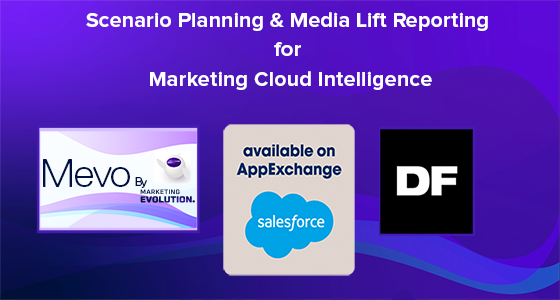Common Retail Marketing Attribution Mistakes and How to Avoid Them
Learn how Regions Bank Perfected their customer journey

If you’re already using attribution models to shine a light on the impact of each touchpoint in today’s complex customer journey, you’re in good company. 76% of marketers say they currently use or will soon be using attribution measurement to meet consumer demands for a rich, relevant omnichannel experience. But for retailers especially, it’s not just the attribution model, but also the quality of the data and the way it’s leveraged that can make a difference between success and failure.
Understanding the common mistakes and biases that can lead to misattribution gives retailers valuable intelligence that drives better-optimized and more efficient marketing strategies.
The Attribution Measurement Challenges You Face
Modern marketing depends on actionable, granular data. For retailers, this means the ability to track the consumer path to purchase down to the person level.The journey might looks something like this: A consumer opens an email sales promotion and clicks the link to browse the online store. A few days later the same shopper gets retargeted with a relevant ad, and eventually hops in a car, enters the local store and purchases the product. Effective attribution shows the precise influence of each marketing element, along with brand impact and proximity to the brick and mortar location.
Generating this rich data requires moving toward attribution models that measure both online and offline channels and shifting away from outdated models that provide an inaccurate or incomplete picture of the customer journey.
Omnichannel attribution is the answer, delivering a holistic view into all channels driving engagement. Using robust omnichannel insights, retailers can develop informed, effective marketing strategies that target individual consumers with the right message at the right time and place.
Common Marketing Attribution Mistakes
While attribution acts as the foundation for today’s omnichannel marketing strategies, retail campaign optimizations can still be compromised by flawed data. Addressing these flaws while meeting shopper demands requires an understanding of the common mistakes that prevent marketers from unlocking the full value of attribution measurements Take a look:
1. Siloed Online and Offline Measurements
While shoppers engage both online and offline as they make their way down the sales funnel, many marketers still conduct attribution measurements separately.
This siloed approach results in limited visibility into all interactions across the broader customer journey. Without a unified view of all engagements, gaining consistent and relevant insights about path to purchase and marketing effectiveness down to the person level is difficult, if not impossible. Think back to the previous example of a shopper engaging with an email and seeing retargeted ad before purchasing in-store. With isolated online and offline attribution, the email and ad that drove this sale would not be credited.
2. First or Last Touch Attribution
First or last touch attribution places total value on the first or last touchpoint engaged with by a consumer before conversion.There’s a good reason why this form of attribution measurement has grown obsolete.The consumer journey is more fragmented than ever, and measurements need to accurately account for the influence certain touchpoints and engagements have in driving conversions. Retailers that continue to leverage first or last touch methods are misattributing the value of touchpoints across their marketing mix.
Looking back to our purchase example once again: First or last touch models would have credited full attribution to either the sale email or the retargeted ad, when both played a role in conversion.
3. Targeting Bias
Another common marketing attribution mistake comes in the form of targeting bias.This involves undercounting the value of top-funnel branding and messaging and focusing more heavily on short-term activities leading to a sale.To avoid this bias and accurately measure the impact of offline, top-funnel brand engagement, marketers need to adopt a unified marketing measurement strategy capable of measuring offline to online sales.
4. Missing Leading Indicators
It seems like everywhere you turn, another marketing analytics platform has popped up with a fresh take on old attribution methods. All too often a crucial element is missing—the ability to measure in-campaign. By focusing measurements on lagging indicators like sales generated, retailers remain one step behind their target audience. The solution is to leverage attribution models that incorporate both leading and lagging indicators, enabling in-flight optimizations.
5. Inventory Bias
One of the most common forms of misattribution comes in the form of cheap inventory bias. Essentially, when low-priced retail goods generate more engagement, the root cause is often simpler than marketers would generally believe—the cheaper the goods, the more likely people can afford them. Higher price points often means fewer consumers willing to convert, generating lower engagement than cheaper inventory.
6. Cookie-Based Bias
This form of misattribution can be especially detrimental to ecommerce retailers. Marketers often rely on cookie-based measurements to understand where and when a consumer may have been influenced to purchase. This means that when a consumer deletes their cache, cookies get deleted along with all accurate cookie-based attribution. To mitigate this common issue, retailers with a strong digital presence must focus on identity tracking rather than cookie-based measurements.
Final Thoughts
Attribution measurements give retailers rich insights to help fully understand consumer behavior at every touchpoint and optimize marketing strategy. But not all attributions are created equal. Common errors in marketing attribution data can mislead retailers into optimizing the wrong channels and messages -- mistakes that no marketer can afford. The key is to create a single view of the customer journey, combining offline and online attribution data. Retailers who invest in the very best unified marketing measurement technology that delivers holistic attribution data down to the person-level will produce exceptional consumer experiences that drive real results from shoppers, everywhere they shop.






















